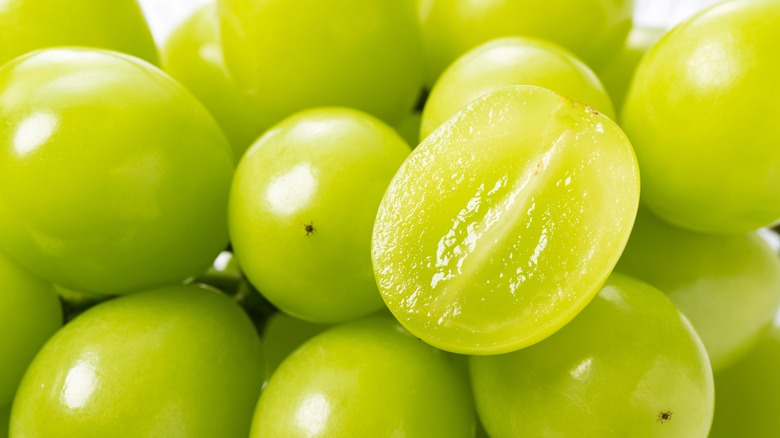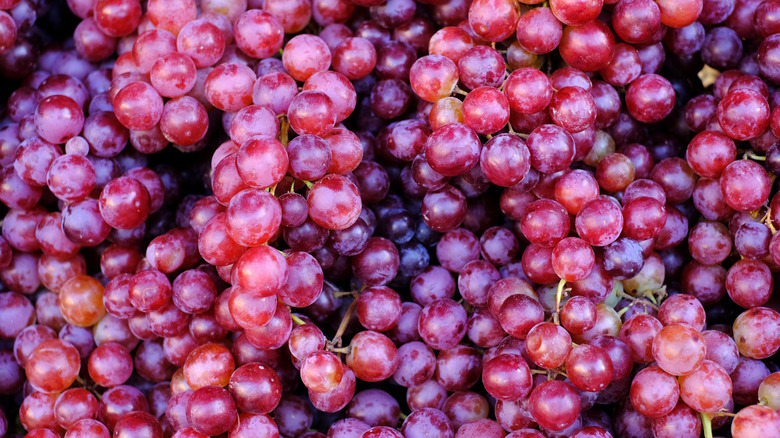Is It Safe To Eat Wrinkly Grapes?
Grapes are a delicious fruit with plenty of health benefits — including, per Healthline, anticancer effects — but like any produce they definitely can go bad, either naturally through age, or as a result of poor storage conditions.
So how do you know if your grapes have gone bad? According to The Whole Portion, there are several ways to evaluate the condition of your grapes, based on factors that range from color and smell to taste and texture. Healthy grapes, for example, should have good color, a pleasant smell, a taste that's not sour or bitter, and a firm texture. In terms of the latter, wrinkled grapes are generally considered an indicator of spoilage.
However, as Chicago Food Bank observes, small fruits like grapes and cherries bruise easily, and what may appear to be spoilage could just be fruit that was crushed through overaggressive handling. But although technically these wrinkled grapes may still be safe to eat, Spoon University advises against it, since in that condition they're definitely not going to taste as good as firm, healthy grapes.
How to store grapes for maximum freshness
Of course, having to evaluate grapes for safety and edibility is not something anyone wants to do on a regular basis, and it can best be avoided through proper storage. Follow the protocols and you'll likely never again have to wonder whether your grapes are turning into raisins ... or worse.
According to Allrecipes, grapes do best at 30 to 32 degrees Fahrenheit, and they like 90 to 95% humidity, so the best place to store them is in the refrigerator, ideally in the back of a crisper drawer where it's extra cold.
Stored properly, per My Recipes, grapes can last for as long as two months. However, it's important to remember that although grapes like high humidity, they don't like moisture. To help keep grapes fresh, don't wash them until you're ready to eat them, and make sure you leave them in their original packaging, which has perforated holes to give them the proper ventilation.

